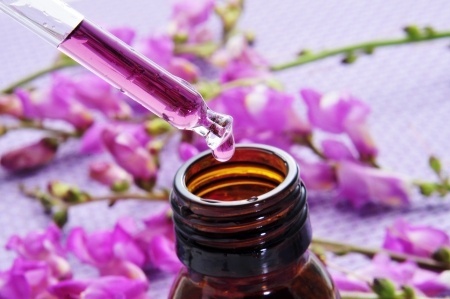
Essential oils sourced from plants are viewed as a natural preservative in foods especially against pathogenic and spoilage bacteria. They are compared favourably to more common preservatives such as sodium benzoate and potassium sorbate. This broad spectrum property against many microbes is in addition to their role as antioxidants. In medieval times, such herbs were used to disguise the flavour of poor quality meat or obtain additional shelf-life when rubbed into its flesh. Back then, people were relying in part on the unknown ability of the oil to kill bacteria. Liz-Balchin et al., (1998), Burt (2004) and just recently Solorzano-Santos and Miranda-Novales (2011) cover aspects of anti-microbial activity of essential oils.

There is still plenty of research to be conducted on essential oils because it is not known how efficacious they might be, which organisms are primarily affected and whether significant issues over their sensory properties can be overcome. The activities of each oil depend on which plant it comes from, how it was extracted and the chemical composition making up the oil. It is surprising where essential oils can be obtained from but it’s worth looking at those from plants such as Juniper (Ennajar et al., 2009), thymes generally (Min & Oh, 2009; Jia et al., 2010), Satureja and Zataria spp. (Saei-Dekhordi et al., 2010a & b).
The essential oils appear to help extend the range of antimicrobial agents and provide additional hurdles to microbial growth. They are generally more active against gram-positive bacteria than gram-negatives ones (Kokoska et al., 2002; Okoh et al., 2010).
One recent study from a group in Morocco reignited my interest by looking at essential oils from a thyme (Thymus algeriensis), a Eucalyptus species (Eucalyptus globulus) and from Rosemary (Rosmarinus officinalis) (Ait-Ouazzou et al., 2011). Analysis of the volatile composition used gas chromatography with mass spectroscopy (GC-MS). On the basis of relative activity, the thyme was more successful against spoilage bacteria (bacteriostat and bacteriocidal properties) than Rosemary or the Eucalyptus spp. The authors demonstrated for the first time, the preservative behaviour of Eucalyptus globulus.
Other recent articles have focussed on the effects of essential oils in protecting meats, especially against Salmonella. One feature of many of these oils is the presence of 1,8-cineole in the profile and which is found in a number of herbs although similar claims are made for a variety of terpenes and terpenoids.
Carvacrol is especially effective against various microbes (Veldhuizen et al., 2006). It is found as the major component of thyme (45%w/w) and oregano (60-75%w/w) (Lagouri et al., 1993; Arrebola et al., 1994). The antimicrobial activity is broad, working against both gram-negative and gram-positive bacteria (Friedman et al., 2002). The outer membrane of the gram-negative bacteria is disrupted causing lipopolysaccharides to leach away and raising the permeability of the cytoplasmic membrane which disrupts ATP synthesis (Burt, 2004). Veldhuizen’s team found that carvacrol upset the membranes in gram-positive bacteria and altered their permeability to protons and potassium ions (Veldhuizen et al., 2006) which drive ATP production.
Certain antibiotics work extremely effectively with antimicrobials in killing opportunistic pathogens as was demonstrated by a combination of essential oil from Myrtus communis with amphotericin B on the Thrush causing yeast, Candia albicans (Mahboubi and Bidgoli, 2010). In fact, thyme oil appears highly effective in combinations with the same antibiotic (Saad et al., 2010)
References
Ait-Ouazzou, A., Loran, S., Bakkali, M., Laglaoui, A., Rota, C., Herrera, A., Pagan, R. Conchello, P. (2011) Chemical composition and antimicrobial activity of essential oils of Thymus algeriensis, Eucalyptus globulus and Rosmarinus officinalis from Morocco. DOI: 10.1002/jsfa.4505
Arrebola, M.L., Navarro, M.C., Jimenez, J., Ocana, F.A. (1994) Yield and composition of the essential oil of Thymus serpylloides subsp., serpylloides. Phytochemistry 36 pp.67–72.
Burt, S. (2004) Essential oils: their antibacterial properties and potential applications in foods—a review. Int. J. Food Micro. 94(3) pp. 223-253
Ennajar, M., Bouajila, J., Lebrihi, A., Mathieu, F., Abderraba, M., Raies, A., Romdhane, A. (2009) Chemical composition and antimicrobial and antioxidant activities of essential oils and various extracts of Juniperus phoenicea L. (Cupressacees). J. Food Sci. 74(7):M364–71.
Friedman, M., Henika, P.R., Mandrell, R.E. (2002) Bactericidal activities of plant essential oils and some of their isolated constituents against Campylobacter jejuni, Escherichia coli, Listeria monocytogenes and Salmonella enterica. J. Food Prot. 65 pp. 1545-1560
Jia, H.L., Ji, Q.L., Xing, S.L., Zhang, P.H., Zhu, G.L., Wang, X.H. (2010) Chemical composition and antioxidant, antimicrobial activities of the essential oils of Thymus marschallianus Will. And Thymus proximus Serg. J. Food Sci. 75(1):E59–65.
Kokoska, L., Polesny, Z., Rada, V., Nepovim, A., Vanek, T. (2002) Screening of some Siberian medicinal plants for antimicrobial activity. J. Ethnopharmacol. 82 pp. 51–3.
Lagouri, V., Blekas, G., Tsimidou, M., Kokkini, S., Boskou, D. (1993) Composition and antioxidant activity of essential oils from oregano plants grown wild in Greece. Zeitschrift fur Lebensmittel-Untersuchung und -Forschung 197 pp.20–3.
Lis-Balchin, M., Deans, S.G., Eaglesham, E. (1998) Relationship between bioactivity and chemical composition of commercial essential oils. Flavour Frag J. 13 pp. 98–104
Mahboubi, M., Bidgoli, F.G. (2010) In vitro synergistic efficacy of combination of amphotericin B with Myrtus communis essential oil against clinical isolates of Candida albicans. Phytomedicine 17 pp. 771–4.
Min, B.J., Oh, J.-H. 2009. Antimicrobial activity of catfish gelatin oating containing Origanum (Thymus capitatus) oil against gram-negative pathogenic bacteria. J. Food Sci. 74(4): M143–8.
Okoh, O.O., Sadimenko, A.P., Afolayan, A.J. (2010) Comparative evaluation of the antibacterial activities of the essential oils of Rosmarinus officinalis obtained by hydrodistillation and solvent free microwave extraction methods. Food Chem. 120 pp. 308–12.
Saad, A., Fadli, M., Bouaziz, M., Benharref, A., Mezrioui, N.-E., Hassani, L. (2010) Anticandidal activity of the essential oils of Thymus maroccanus and Thymus broussonetii and their synergism with amphotericin B and fluconazol. Phytomedicine 17 pp. 771–4
Saei-Dehkordi, S.S., Tajik, H., Moradi, M., Khalighi-Sigaroodi, F. (2010) Chemical composition of essential oils in Zataria multiflora Boiss. from different parts of Iran and their radical scavenging and antimicrobial activity. Food Chem. Toxicol. 48 pp. 1562–7.
Saei-Dehkordi, S.S., Fallah, A.A., Heidari-Nasirabadi, M., Moradi, M. (2012) Chemical composition, antioxidative capacity and interactive antimicrobial potency of Satureja khuzestanica Jamzad essential oil and antimicrobial agents against selected food-related microorganisms. Intl. J. Food Sci. Technol. 47 pp. 1579–85.
Solórzano-Santos, F., Miranda-Novales, M.G. (2011) Essential oils from aromatic herbs as antimicrobial agents. Curr. Opinion Biotechnol. doi:10.1016/j.copbio.2011.08.005
Veldhuizen, E.J.A., Tjeerdsma-van Bokhoven, J.L.M., Zweijtzer, C., Burt, S.A., Haagsman, H.P. (2006) Structural requirements for the antimicrobial activity of carvacrol. J. Agric. Food Chem. 54 pp. 1874–9.
Leave a Reply